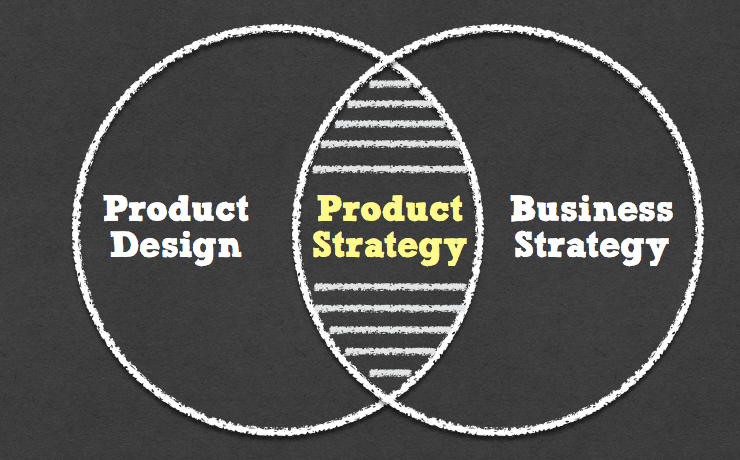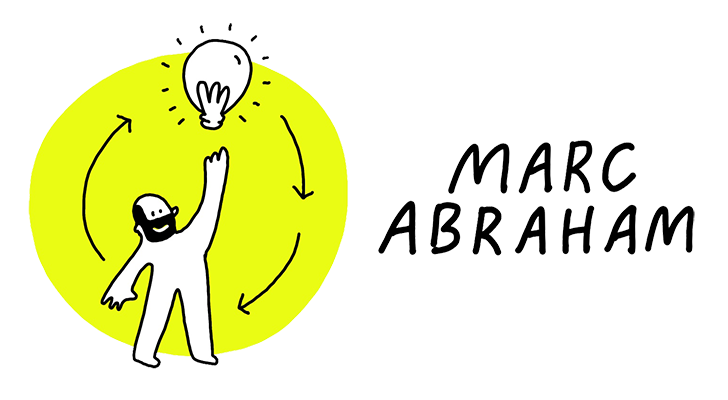I often see product managers seemingly forgetting about product strategy. I typically refer to strategy as the ‘bit in the middle’ between a product vision and a product roadmap. You can hardly describe a product strategy as a ‘tool’ and one could arguably dedicate a whole series of blog posts to the topic of creating and managing a product strategy.
For the sake of simplicity, I’ll treat product strategy as a tool and I’ll use this post to look at the difference between product vision and strategy as well as the components of a product strategy.
What is a product strategy? – Once you have established a product vision – an aspirational view of what the product needs to achieve – you’ll need product strategy to work out how to achieve the vision. Typically, a business will have high level business objectives it needs to achieve within a certain timeframe and the strategy will map out the steps or milestones that need to be in place to achieve these goals.
For example, if the vision is to become the no. 1 online stationery provider in the UK by 2017, a specific business business objectives can be to UK market leader for stapler sales online by December ’16. The product strategy consists of a number of steps or elements necessary to achieve on the vision and its related goals. The product strategy can take the form of a simple flow diagram of steps or components or a “vision board”, a template created by Roman Pichler. If I take the fictitious example of becoming the no. 1 online stationery provider in the UK by 2017, this is what such a vision board would look like:

What a product strategy isn’t? – Let’s be clear, a product strategy isn’t just a bunch of features and timings. Like I mentioned above, if you start off with vision, then the main function of your product strategy is to visualise the way forward on how to achieve this vision. As product consultant Greg Geracie points out: “Providing a solid product strategy will help focus activities, establish a direct link between the product and the company strategy, and clearly identify to everyone involved the high-level steps currently being taken to achieve the vision.”
Creating a coherent and easy to understand product strategy can be a very effective communication and collaboration tool for product managers. I often find it much easier to talk to stakeholders – especially those who aren’t that close to product development – about strategic goals than about specific features.
Once you’ve defined your product strategy, a product roadmap should follow an agreed product strategy closely since it’s more of a tactical tool which outlines the high level product milestones to create as part of an overarching product strategy. The roadmap connects the product strategy and the day-to-day product design and development.
When to come up with a product strategy? – If there’s no strategy for the product or portfolio that you’re responsible for, then I strongly recommend creating and validating a product strategy first. In my experience, having a valid product strategy in place really helps to put together a clear roadmap and make tough prioritisation decisions. The reason why I find validating a product strategy just as important as creating one is that validation gives you the opportunity to ‘road test’ a strategy in a cost effective manner before committing lots of financial or people resources to implementation. Validation is all about learning about and getting answers on some of the following questions: Is the direction we’re looking to take the right one? How does this direction resonate with our customers?
How to come up with a product strategy? – To arrive at a strategy, in the form of a vision board or an outline key milestones, it’s important to consider a wide range of factors that inform a strategy. Below is an overview of some of the factors which play a role when defining and implementing a product strategy.

This overview is by no means intended to be finite. It’s about considering a wide range of aspects when considering a product direction or idea. We’ve all been there; it’s easy to look at a cool sounding product idea and say ‘yes’ to it, without considering fully whether it meets a customer need or whether it will actually have an impact on the bottom line of the business.
Equally, it doesn’t mean that you automatically have to reject a good idea because a competitor already does it. What a strategy effectively gives you is a framework against which you can make product and tradeoff decisions, and say ‘no’ to things. I often refer to product strategy as ‘the bit in the middle’ between a business vision / strategy and a product roadmap / features. Des Traynor, co-founder of Intercom, has visualised this idea of ‘the bit in the middle’ quite nicely in this diagram:

Main learning point: A product strategy outlines the key steps or milestones – and their underlying rationale – necessary to achieve a business vision and specific business objectives. Coming up with a product strategy means looking at and validating things such as customer needs, market environment and constraints. The product strategy is the ultimate tool to link business strategy with product design and development.
Related links for further learning:
- http://www.actuationconsulting.com/is-there-a-difference-between-product-strategy-and-a-product-roadmap/
- https://blog.intercom.io/product-strategy-means-saying-no/
- http://firstround.com/review/Top-Hacks-from-a-PM-Behind-Two-of-Techs-Hottest-Products/
- https://blog.intercom.io/talk-product-strategy-saying/


9 responses to “My Product Management Toolkit (2) – Product Strategy”
[…] toolkit, I’ve thus far covered the creation of a product vision and the definition of a product strategy. The next thing to look at is goal setting: what are the business goals that a product strategy and […]
[…] assessing a product opportunity makes it so much easier to have really focused conversations about product strategy or goals that you are looking to deliver […]
[…] key thing I’ve learned as a product manager is to validate a proposed product strategy or user assumptions before committing a lot of time, money and effort to a specific product […]
[…] out time to create a product vision, strategy and roadmap – Having a clear product vision, strategy and roadmap can really help in safeguarding yourself becoming the steward of someone else’s […]
[…] tackle, I got a blank stare in return. My explaining the need for having clear business and product strategies unfortunately didn’t seem to resonate much with Bob […]
[…] The product vision and strategy […]
[…] learn about the big picture, whilst not losing sight of the detail. You can learn about creating a product strategy, by figuring out a concrete vision for a product and then work backwards. Then getting stuck into […]
[…] for the product strategy – Driving and repeating the product strategy. The product leader needs to ensure the strategy is implemented, delivering tangible value to the […]
[…] to the steps involved in creating and aligning on a strategy, the DIBB framework starts with data and observable facts and ends with a number of bets to pursue […]